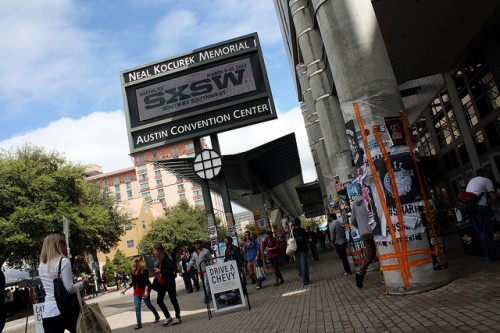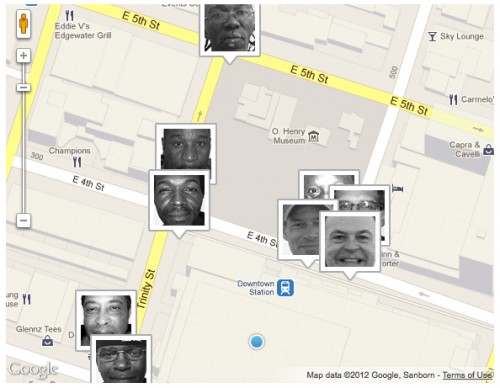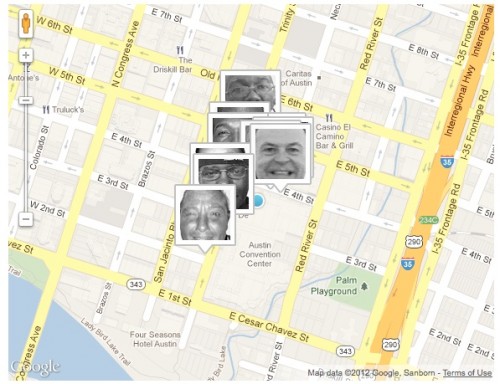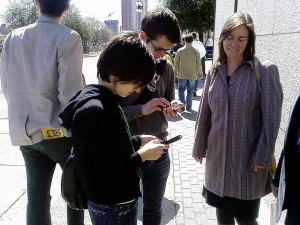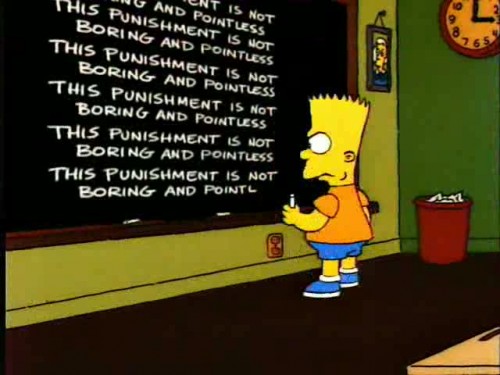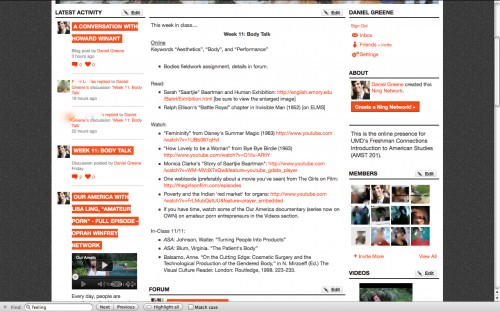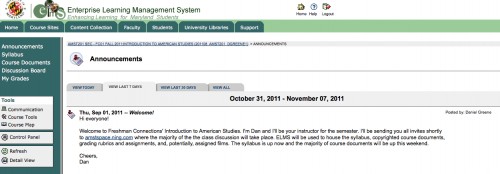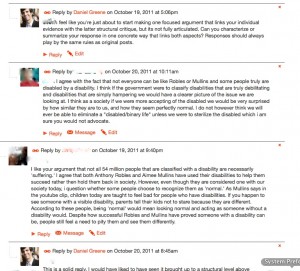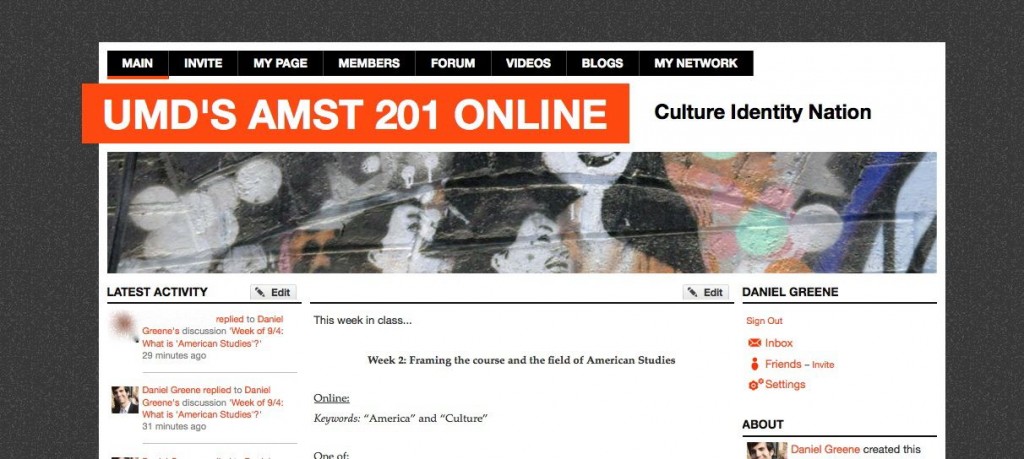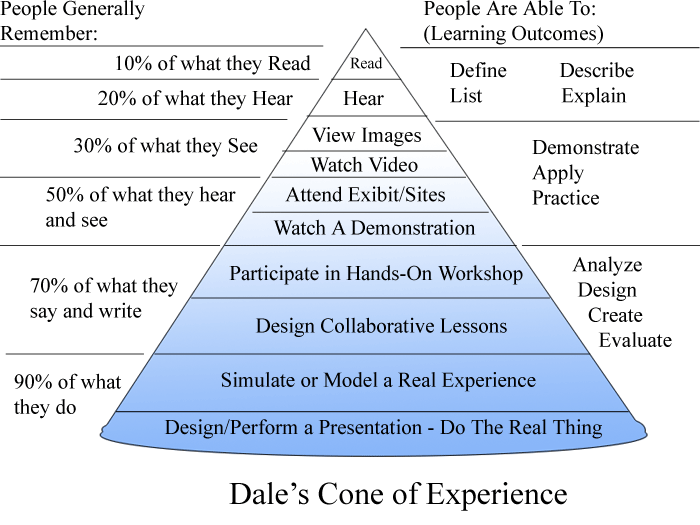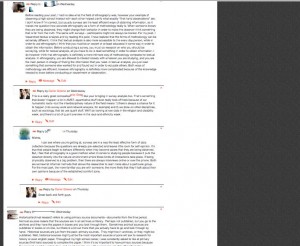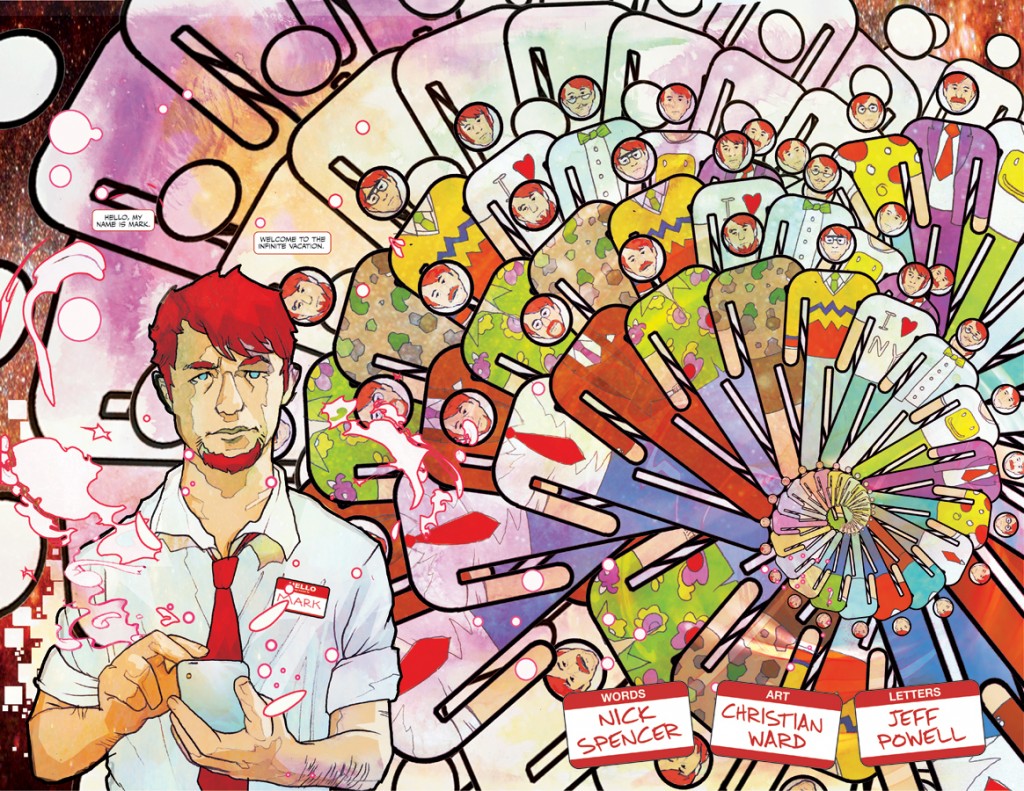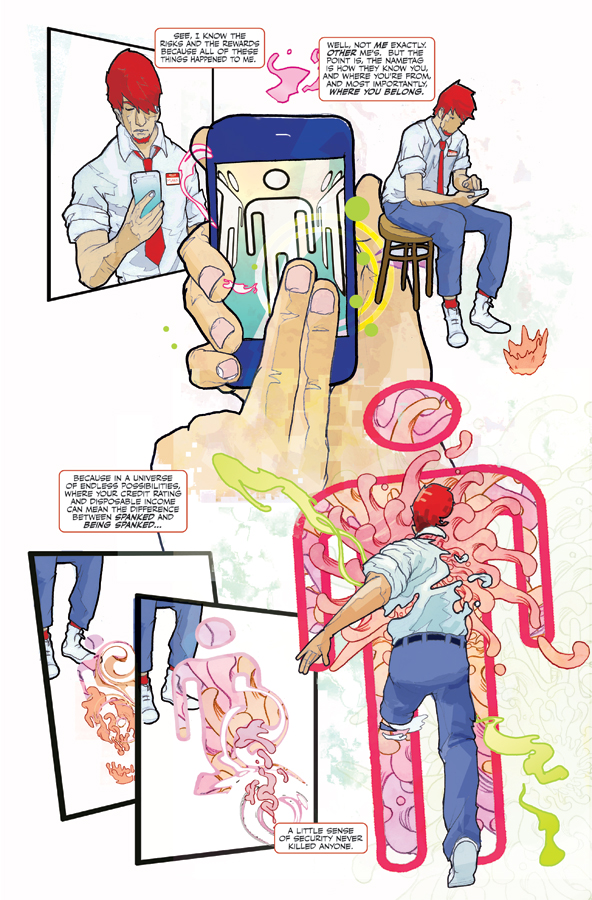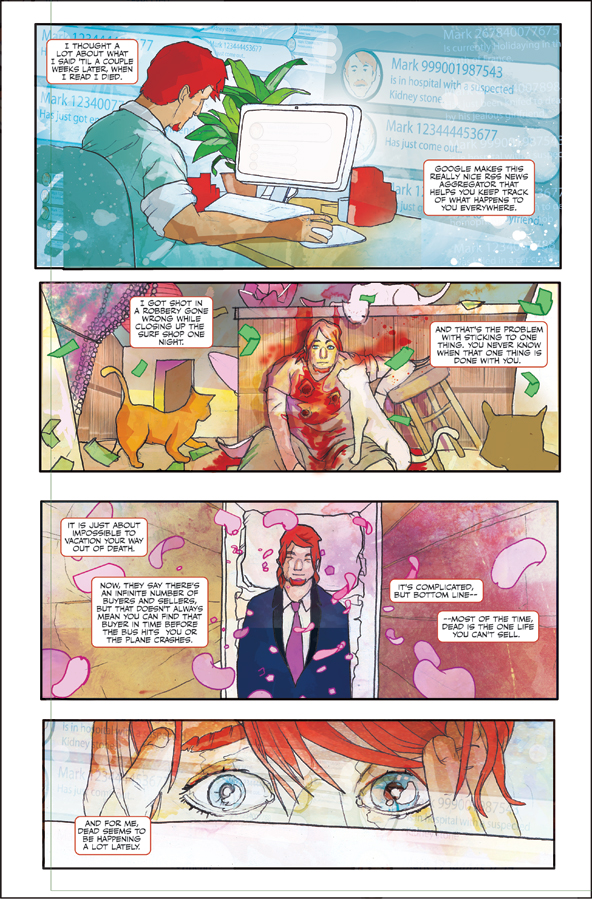This is part of a series of posts highlighting the Theorizing the Web conference, April 14th, 2012 at the University of Maryland (inside the D.C. beltway). It was originally posted on 3.30.12 and was updated to include video on 7.19.12. See the conference website for

Drawing on a diverse range of approaches–from media archaeology and ethnography to queer theory and critical code studies–the “Politics of Design” panel will collectively consider where and how power pools and collects in the designed, value-laden spaces of the internet. Individual panelists will take up digital networks and anonymity (Moesch); established and proposed internet architectures (Shilton and Neal); slick Web 2.0 and grungy “dirt style” interfaces (Kane); and the failed rhetoric of the digital sublime by the founders of Google and Second Life (Chia). Not content to dwell on surface design features, each speaker unearths hidden variables–whether technological, social, or historical–that affect the systems, platforms, and communication structures under discussion. In the process, they expose the faultlines in those structures that allow us to envision them otherwise; the politics of design, that is to say, ultimately point–directly or indirectly–to alt-design and re-design.
Please join us on 4/14 for what promises to be a fabulous #TtW12 panel!
[Paper titles and abstracts are after the jump.]
Caroyln Kane, “An Archeology of Compositing: From Blue Screen and Chromakey to the Alpha Channel and 2.0 Look, Dirt Style”
 Using digital media to simulate “rough edges, stains, organic textures, [and] grunge-retro fonts,” can help one avoid the cliché “2.0 Look,” argues British designer Elliot Jay Stocks, characterized by “vibrant, high contrast colour; gloss; sheen; bevelled edges; gradients; and soft-focus effects (with a subtle outer glow),” all of which Stocks finds aseptic and (too) clean-cut, as voiced in his 2007 tirade entitled, “Destroy The Web 2.0 Look,” presented at The Future of Web Design conference in New York.
Using digital media to simulate “rough edges, stains, organic textures, [and] grunge-retro fonts,” can help one avoid the cliché “2.0 Look,” argues British designer Elliot Jay Stocks, characterized by “vibrant, high contrast colour; gloss; sheen; bevelled edges; gradients; and soft-focus effects (with a subtle outer glow),” all of which Stocks finds aseptic and (too) clean-cut, as voiced in his 2007 tirade entitled, “Destroy The Web 2.0 Look,” presented at The Future of Web Design conference in New York.
Stocks is not alone. Also in support of anti-aseptic (and even a bit dirty) web design is Russian-born net artist Olia Lialina who, in her 2011 talk at the New Museum in downtown Manhattan, advocated to an audience of hip designers, a future web aesthetic chalked full of unicorns, simple animated GIFFs, personal journal entries, and naïve, amateur-looking home pages. Going back to “amateur graphics” resist 2.0’s corporate and professional look, which has acted as a disinfectant to personal expression. “We are all naïve users at some point,” Lialina argues, citing web pioneer Ted Nelson, “and we don’t need to be ashamed of this.”
But what happens if these anti-style styles are placed in a broader historical context––such as the history of digital graphics and special effects––do these stylistic call to arms suffice as critical models? Do we want to see a future Internet inundated with (simulated) dirt, simply because loud color combinations that emulate the trashiness of cheap consumer culture, oppose clean, corporate professionalism? Moreover: does such amateur-looking remix or dirt style actually oppose corporate professionalism, or is it simply the elbow grease, used to ease in the next wave of capitalist-consumer products? This paper draws connections between the history of chromakey, from its pre-history in blue screen, through the development of the alpha channel, to contemporary digital compositing and web aesthetics or, the “2.0 look,” and its counterpart in dirt style. I argue that, once the alpha channel was standardized in computing in the 1980s, colors could be easily composited to produce clean, slick, and corporate-looking designs. Subsequently, anti-styles like dirt style emerged, marking a new trend in web design to use color and space in a ways that spoke out against the homogeneity and corporate professionalism of Internet culture.
Katie Shilton and James Neal, “Theorizing Future Internet Architectures: Values in the Design of Named Data Networking”
 Will we shoot virtually at each other over the Internet? Probably not. On the other hand, there may be wars fought about the Internet. – Vinton Cerf (Cerf, 2008)
Will we shoot virtually at each other over the Internet? Probably not. On the other hand, there may be wars fought about the Internet. – Vinton Cerf (Cerf, 2008)
The Internet has permeated the economic, political, cultural and social domains of global society and transformed the way in which we present and transmit knowledge. The infrastructure underlying these communications continues to evolve, with ramifications for not only the technical protocols that govern the way the Internet functions, but also implications for social, economic, and legal issues. Internet protocols affect debates about intellectual property, cyber security, and the basic performance and reliability of Internet services (DeNardis, 2009). Our increasing reliance on a secure and dependable IT infrastructure requires attention to not only technological specifications but also to value-sensitive and ethical concerns inherent in the design of Internet architecture.
This presentation asks: what values (e.g. privacy, trust, security, equity, transparency, etc.) will be considered in the design of future Internet architectures? And how should these values be embedded within design to increase the trustworthiness, security, reliability, and usability of the Internet?
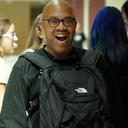 To answer these questions, we are conducting an ethnographic investigation of a case study in future Internet design. The Named Data Networking (NDN) project is one of four projects funded under the National Science Foundation’s (NSF) Future Internet Architecture (FIA) program, meant to explore the conception, design, and evaluation of future Internet architectures. NDN proposes to replace the current backbone of the Internet: the protocols known as TCP/IP. While TCP/IP relies on hosts and addresses to route information around the web, NDN redesigns routing to focus on secure, trustworthy data. This fundamental change to how the Internet handles communication impacts not only a wide variety of technical affordances, but also the basic governance structure of the current Internet (Mueller, 2002). Our project seeks to understand the ethical and social impacts of these changes.
To answer these questions, we are conducting an ethnographic investigation of a case study in future Internet design. The Named Data Networking (NDN) project is one of four projects funded under the National Science Foundation’s (NSF) Future Internet Architecture (FIA) program, meant to explore the conception, design, and evaluation of future Internet architectures. NDN proposes to replace the current backbone of the Internet: the protocols known as TCP/IP. While TCP/IP relies on hosts and addresses to route information around the web, NDN redesigns routing to focus on secure, trustworthy data. This fundamental change to how the Internet handles communication impacts not only a wide variety of technical affordances, but also the basic governance structure of the current Internet (Mueller, 2002). Our project seeks to understand the ethical and social impacts of these changes.
This presentation will discuss a conceptual analysis of NDN internal writings and publications. Using a framework proposed by DeNardis (2009) for analyzing Internet standards, we will examining the content of developing NDN standards, and the implications of these new standards for political processes, public policy, institutional power struggles, and the developed and the developing world. This analysis, and a resulting taxonomy of values embedded in the current NDN approach, can help us understand the social challenges and values engendered by this emerging architecture.
Jarah Moesch (@jarahmoesch), “Queer Ghosts in the Machine: The Mechanics of Networked Anonymity in the Tor Project”
 In the United States, freedom, democracy, anonymity, and the individual are misunderstood entities within, and in relationship to, digital spaces. Digital technologies have, until recently, been popularly considered to be open, democratic networks of distributed and decentralized power, allowing individual people equal access to receive and share information. United States cultural stories of the Internet also misplaced digital technologies within the utopian ideal of a democratic society, a free space – free as in freedom- where people could leave discrimination behind, simply by becoming anonymous. Of course, academics and everyday users came to realize that socio-cultural biases repeat themselves, regardless of anonymity, across digital social spaces in much the same ways as other public spheres.
In the United States, freedom, democracy, anonymity, and the individual are misunderstood entities within, and in relationship to, digital spaces. Digital technologies have, until recently, been popularly considered to be open, democratic networks of distributed and decentralized power, allowing individual people equal access to receive and share information. United States cultural stories of the Internet also misplaced digital technologies within the utopian ideal of a democratic society, a free space – free as in freedom- where people could leave discrimination behind, simply by becoming anonymous. Of course, academics and everyday users came to realize that socio-cultural biases repeat themselves, regardless of anonymity, across digital social spaces in much the same ways as other public spheres.
This paper focuses on the realization that, “In trying to understand how difference matters in the digital era, we should perhaps suspect that the very structures of our information economy (and of the code that underwrites it) look a particular way today precisely because the Civil Rights and other freedom movements happened at mid-century. Both cybernetics and Civil Rights were born in quite real ways of World War II and are caught in tight feedback loops” (McPherson, 2011). I argue that if we take the always already entanglement of civil rights and the code and protocols that structure our information economy as foundational to any study of digital networks, we understand that these networks have never been democratic or free.
What then are the possibilities for civil rights, for freedom? How do race, gender, sexuality, and code mutually constitute each other? What happens when we interrogate the code itself as a way of moving beyond real names policies as the singular understanding of anonymity on the Internet? What are the tensions between identity, anonymity and queerness, especially when considering their vexed status with technology and each other?
This paper will use the Tor Project, an open-source, distributed network which allows private communications over public networks through the protection of the transport of data, as a foundation for thinking through how queerness (inclusive of non-normative sub-cultures) is central to any analysis of digital networks and the protocols and code that embody digital subjectivities.
Untangling these mechanics requires a close reading and queer interpretation of the Tor Project’s network. Using queer theory and critical code studies, I uncover anonymity’s queerness: the meaning embedded in the actions, the mechanics and the rules of the network itself.
Aleena Chia, “Google’s Mind of God”
 In a much quoted interview with Technology Review, Google’s co-founder Sergey Brin, proclaimed that “the perfect search engine would be like the mind of God” (Ferguson 2005). By the same token, in an interview with anthropologist Thomas Malaby (2009, 77), Second Life’s creator Philip Rosedale describes the work of designing virtual worlds as “speaking to the world through code … I think that code is physical law, or code is god.” The analogies of the divine by these two hi-tech luminaries are examples of what David Nye (1994) refers to as the technological sublime – an essential religious feeling aroused by the confrontation with impressive technological objects. According to Leo Marx (1964), the invocation of the divine functioned in the rhetoric of the technological sublime of nineteen and twentieth century America as a sanction for technological endeavors, in an effort to neutralize the psychic, social, and environmental dissonance wrought by industrialization. This paper will explore how deployments and receptions of the technological sublime translate to digital platforms and environments such as Google and Second Life in the twenty-first century. To do this, I will outline three variations of the technological sublime that are not stages of succession but reinforcing deployments of the divine in discourses about technology that can be traced back to religious depictions of the heavy plow in the Frankish Empire of 830. Adopting the Foucauldian (1973) view of knowledge-power relations, this paper will argue that these techno-mystical discourses – of mastery through the useful artifact (heavy plow), omniscience through the world machine (search engine), and omnipotence through the complex system (virtual world) – represent escalating conjugations of the divine and the technological in the service of power. Furthermore, adopting the Durkheimian view (2001 [1912]) that God is society apotheosized, it becomes clearer that these discourses deploy the technological sublime as a way to inspire and legitimize power over society. However, unlike its nineteenth and twentieth century counterparts, Google and Second Life’s sublime were received unfavorably by the popular media. In other words, these companies’ deployments of the digital sublime were unsuccessful. This paper will conclude by assessing and explaining these failures – Google’s attempts were met not with awe but indignation because it lacked the vital experiential aspect of the geometric sublime it wanted to create. Because the technological sublime gestures towards sacredness (of the social collectivity), it also has the ability to inspire the protection of that collectivity from profane struggles for power by corporations and individuals. Therefore, unlike its nineteenth and twentieth century manifestations, the digital sublime is an affective social resource that can provide a check on power over populations.
In a much quoted interview with Technology Review, Google’s co-founder Sergey Brin, proclaimed that “the perfect search engine would be like the mind of God” (Ferguson 2005). By the same token, in an interview with anthropologist Thomas Malaby (2009, 77), Second Life’s creator Philip Rosedale describes the work of designing virtual worlds as “speaking to the world through code … I think that code is physical law, or code is god.” The analogies of the divine by these two hi-tech luminaries are examples of what David Nye (1994) refers to as the technological sublime – an essential religious feeling aroused by the confrontation with impressive technological objects. According to Leo Marx (1964), the invocation of the divine functioned in the rhetoric of the technological sublime of nineteen and twentieth century America as a sanction for technological endeavors, in an effort to neutralize the psychic, social, and environmental dissonance wrought by industrialization. This paper will explore how deployments and receptions of the technological sublime translate to digital platforms and environments such as Google and Second Life in the twenty-first century. To do this, I will outline three variations of the technological sublime that are not stages of succession but reinforcing deployments of the divine in discourses about technology that can be traced back to religious depictions of the heavy plow in the Frankish Empire of 830. Adopting the Foucauldian (1973) view of knowledge-power relations, this paper will argue that these techno-mystical discourses – of mastery through the useful artifact (heavy plow), omniscience through the world machine (search engine), and omnipotence through the complex system (virtual world) – represent escalating conjugations of the divine and the technological in the service of power. Furthermore, adopting the Durkheimian view (2001 [1912]) that God is society apotheosized, it becomes clearer that these discourses deploy the technological sublime as a way to inspire and legitimize power over society. However, unlike its nineteenth and twentieth century counterparts, Google and Second Life’s sublime were received unfavorably by the popular media. In other words, these companies’ deployments of the digital sublime were unsuccessful. This paper will conclude by assessing and explaining these failures – Google’s attempts were met not with awe but indignation because it lacked the vital experiential aspect of the geometric sublime it wanted to create. Because the technological sublime gestures towards sacredness (of the social collectivity), it also has the ability to inspire the protection of that collectivity from profane struggles for power by corporations and individuals. Therefore, unlike its nineteenth and twentieth century manifestations, the digital sublime is an affective social resource that can provide a check on power over populations.







